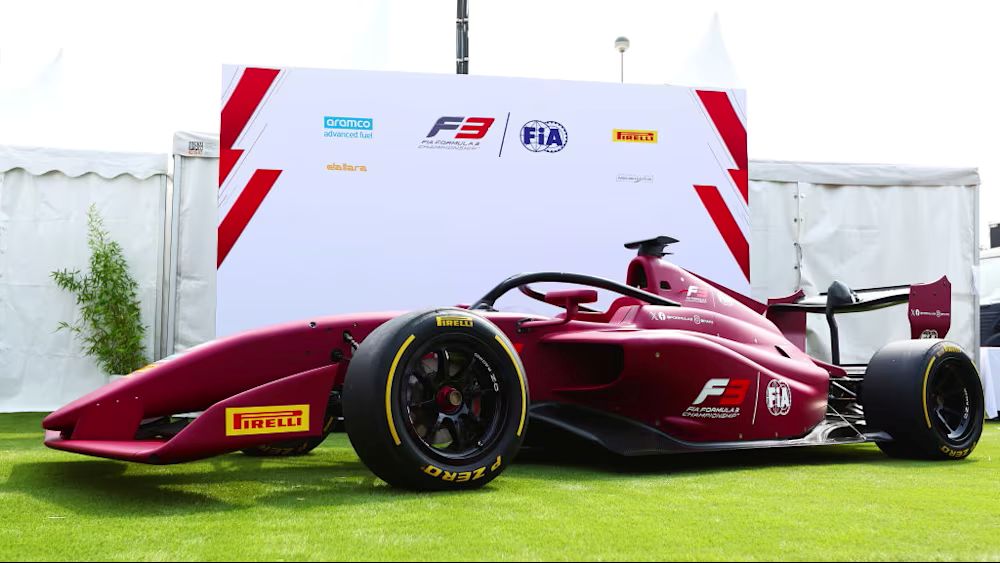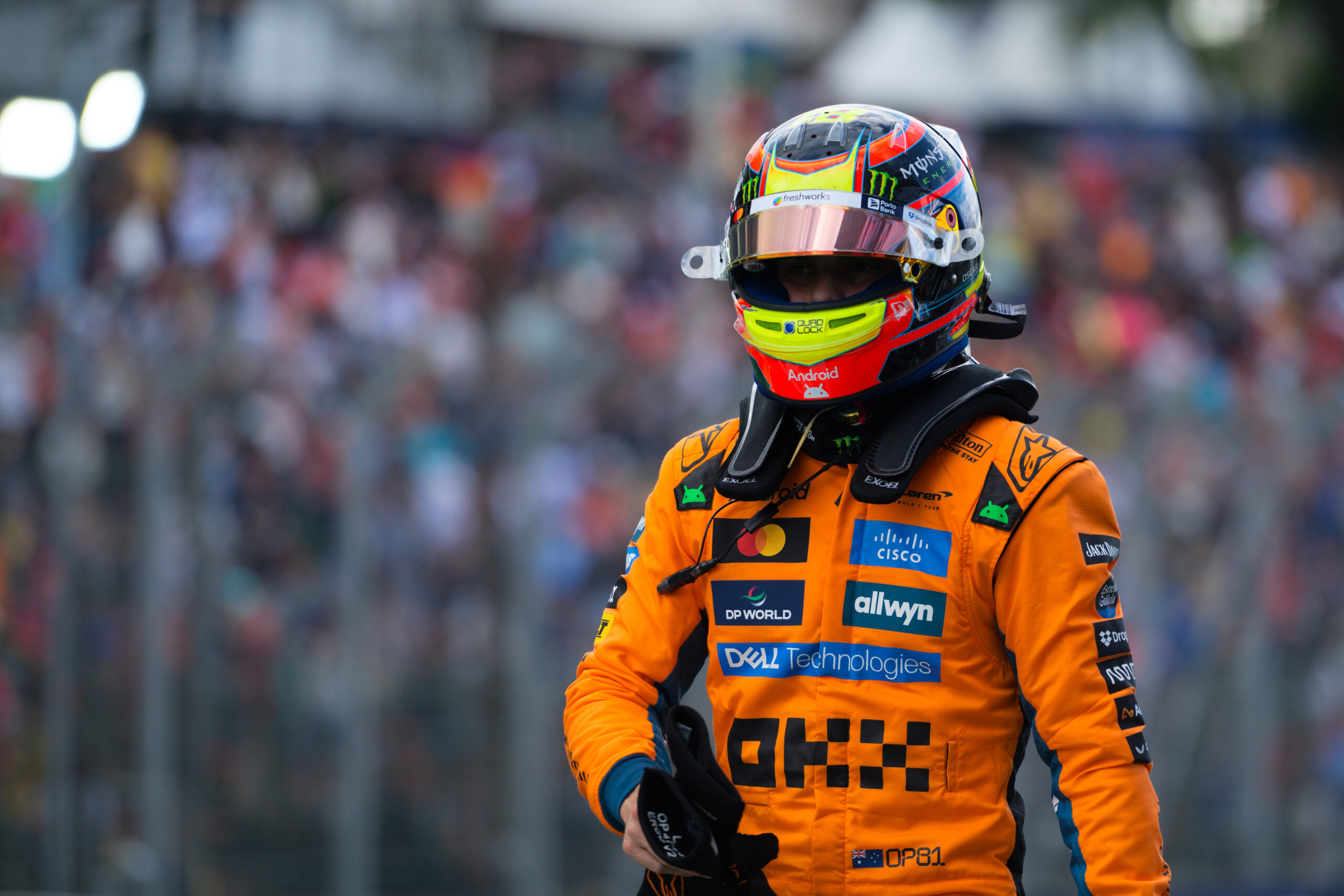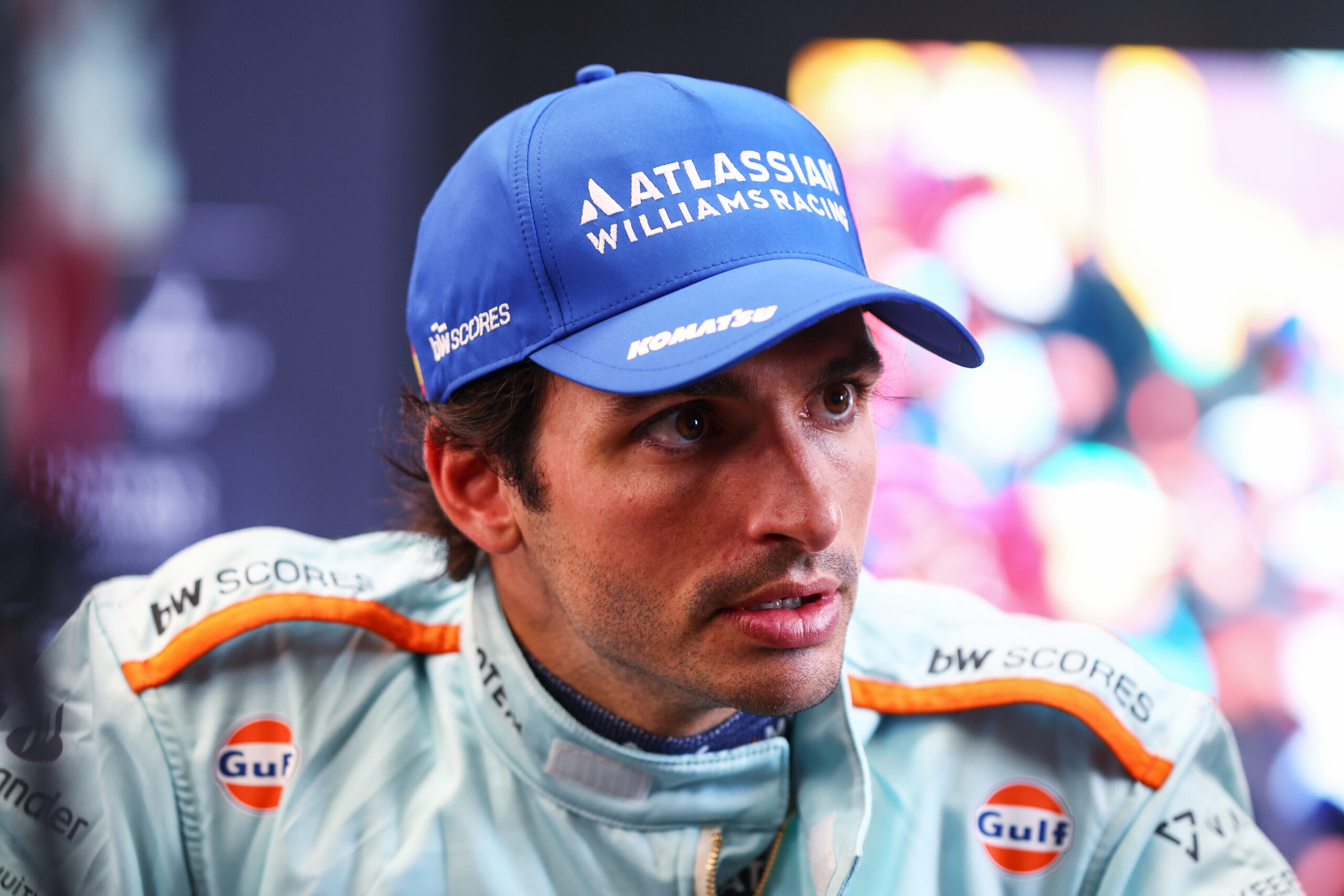The debut of the 2025 FIA F3 car, and especially the use of 100% advanced sustainable fuel has been one of the biggest talking points in the paddock all year. With just Monza left on the calendar, teams and engineers approach the end of the F3 Championship’s first season with the new machine. After nine rounds, they can reflect on what has worked and what they have learned.
This has not been a quiet transition. F3 has introduced cars with reshaped aerodynamics, bigger tyres, and a revised suspension setup, but the real revolution has taken place under the bodywork. Partnering with Aramco and Mecachrome, F3 has successfully run its entire 2025 campaign on 100% advanced sustainable fuel—an achievement that comes without any loss of performance.
For a championship that serves as the final proving ground before F2 and, ultimately, Formula 1, maintaining competitive speed while achieving sustainability targets is no small feat.
The bigger picture: Why F3’s fuel change matters
F3 is a critical step on the FIA single-seater ladder. The series nurtures young drivers aiming for the highest levels of motorsport, testing them with cars that are fast enough to challenge but still focused on driver skill over engineering complexity. Because of this, the category has also become a testbed for technology that could shape motorsport’s future.
Moving to 100% sustainable fuel is more than a box-ticking exercise—it is a blueprint. Motorsport is under increasing pressure to reduce its carbon footprint, but many fear that environmental progress might come at the cost of excitement on track. The 2025 F3 season has shown that it is possible to run on greener fuel without slowing down the racing or changing its character.
An engine upgrade for 2025
F2 and F3 Technical Director Pierre-Alain Michot explained that one of the most significant engineering tasks this year was upgrading the engine to handle the new fuel.
“This year’s engine is an upgrade from 2024,” Michot said. “We’ve made some modifications to the electronics side to accommodate the Aramco Advanced fuel meeting the FIA 100% sustainable fuel standard. That was the main target, to accommodate the new fuel with the engine. So, there were a lot of tests done by Mecachrome to make sure that we could have the same range of performance and reliability as the previous car.”
The electronic control system—the “brain” of the car—needed adjustments so that the fuel could be burned as efficiently and cleanly as possible. This involved refining how the engine times each ignition spark, how much fuel it injects at different throttle positions, and how it manages temperatures during intense racing conditions.
From 55% to 100% sustainable fuel
Before this year, F3 had already taken steps toward greener racing. In 2023 and 2024, the cars ran on fuel that was 55% sustainable. Meanwhile, in 2025, the F3 Championship took an ambitious leap to a fully sustainable blend and pushed ahead determinedly.
“In 2023 and 2024, we were using 55% sustainable fuel and in 2025, we move to 100% advanced sustainable fuel. It’s bio-sourced fuel, the specification of which we chose together in line with our performance expectations,” Michot continued.
Producers make this “bio-sourced” fuel from second-generation materials—waste products such as used cooking oils and agricultural residues—instead of crops grown specifically for fuel. This ensures there is no competition with food production and keeps the focus on recycling materials that would otherwise go to waste.
Extensive testing and development
Achieving 100% sustainable fuel used in the 2025 F3 car was not a matter of simply pouring a new liquid into the tank. It required months of research, laboratory experiments, and real-world validation.
“We tested a variety of specifications in the lab with Aramco, tested and validated on the Mecachrome dyno,” he said, continuing, “We did endurance running, accumulating a lot of mileage and that was continuous throughout the development cycle.”
Michot added, “We were running tests in parallel with the car on track, making improvements to the engine mapping, and implementing changes during the test days. We finalised our specification in early July 2024.”
The dyno—short for dynamometer—is an essential tool in engine development. It allows engineers to run the engine at full power in a controlled setting, measure its exact output, and detect any weaknesses before the car ever turns a wheel on track. Endurance testing simulated the demands of an entire race season, ensuring the engine could maintain its performance over thousands of kilometres without damage.
Running tests in parallel on actual circuits meant the engineers could check that the data matched the reality of racing—high-speed straights, hard braking, and the constant changes in load that a driver creates over a lap.
Understanding engine mapping
The term “engine mapping” might sound abstract, but it is one of the most critical processes in making any fuel work at its best. A map is essentially a set of instructions telling the engine how to behave in every situation—how much fuel to inject, when to ignite it, and how to adjust for temperature or air pressure changes.
“As soon as you put a new fuel in the car, you need to do new engine mapping, which means that we haven’t started from scratch, but we have to make sure that whatever we’re doing, the car is operating as expected with the fuel across the car’s full range of performance and behaviour.
“It needs to work from idle to the rev limiter to make sure that the engine is working properly. If there’s any part that doesn’t work, it can damage the engine. You have to take a lot of parameters into account and are considered when doing a new mapping. So, we’ve done a lot of dyno testing to take it all into consideration and to make sure the new generation fuel is working as efficiently as possible with the engine.”
This mapping is not only about peak power—it is about ensuring the car starts smoothly in the pit lane, responds instantly to the throttle in tight corners, and stays safe under extreme heat.
No loss of performance
The main fear among drivers and fans was that sustainable fuel might mean slower racing. The FIA’s target was clear: the new fuel must match the old in outright performance.
“Engine performance will be the same as per previous seasons. That was one of the main targets working on the dyno. It was really to make sure that whatever the power output we got out of the engine, it was at minimum the same as before. This is where Mecachrome play their role, because Aramco is providing a great product, but Mecachrome have to do their part and make sure that it works with the engine we use.”
The season’s results have confirmed it—the lap times, top speeds, and wheel-to-wheel battles have all matched the intensity of previous years. For the drivers, this means the same challenge they trained for; for the fans, it means the same thrilling spectacle.
Learning through racing
Although engineers completed most of the work before the first race, the season itself teaches valuable lessons. Track temperatures, driver feedback, and real racing conditions provide information that no lab can replicate. The final round at Monza will complete this real-world test, giving engineers a complete data set from a season’s worth of racing on 100% sustainable fuel.
This data will not only shape the next F3 season but also inform developments in F2 and potentially F1. The FIA has made clear that lessons learned in its junior categories are vital for guiding motorsport’s long-term sustainability strategy.
A quiet but significant revolution
When the 2025 F3 car was unveiled, much of the attention focused on the visible changes—its more aggressive bodywork, wider tyres, and refined suspension. Those upgrades have played a role in the season’s racing, but the quiet revolution has taken place in the fuel tanks and engines.
The switch to fully sustainable fuel is not just a technical milestone; it is a statement of intent. It shows that motorsport can lead the way in adopting greener technologies without sacrificing the competitive spirit that defines it.
Monza: The final proving ground
All that remains in the 2025 F3 season is Monza—a track famous for its long straights, high speeds, and unforgiving braking zones. It will be the ultimate stress test for the new fuel and engine package. If the car matches its season-long performance in Monza, the debut year of the 2025 F3 car will stand out as a complete success.
For now, the message from the paddock is clear: sustainable technology is not a future goal—it is already here, delivering the same intensity and drama as ever.





